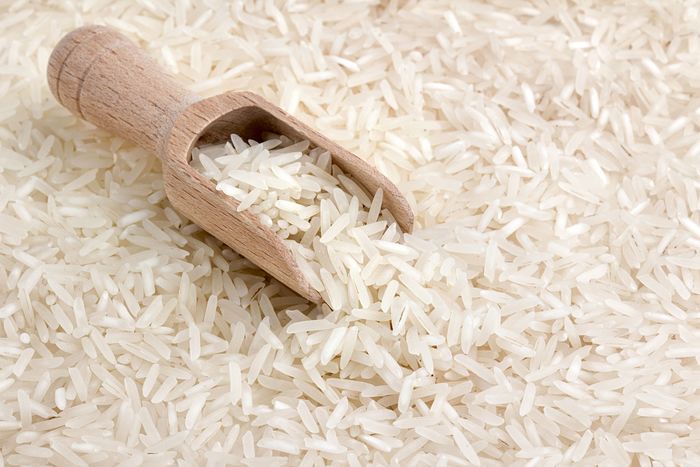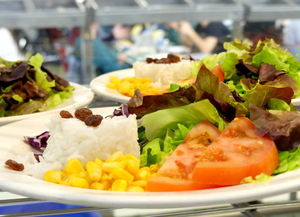Basmati rice
Basmati rice is cultivated in the Himalayan hillsides, north from India and Pakistan, and it is an Indian variety of grain. Its grain is fine and thin.
One of the main characteristics of Basmati rice is its smell, which makes it quite appealing. The aroma of this rice is due to the high concentration of a substance called acetyl-1-pyrroline. The grains contain 0.09 parts per million of a natural substance called 2-acetyl-1-pyrroline, which is about 12 times more than non basmati rice varieties.
Basmati rice is the variety of rice used in the kitchens in Southeast Asia for the elaboration of exotic salads and pilaf (ideal side dish for fish and meat). After boiling, the grain remains spongy and smooth, maintaining the scent and characteristic taste.
Before cooking it, Basmati rice must be soaked. It must be cooked in a low heat, with the same quantity of rice and liquid. Cooking must be done in a covered recipient for approximately 10 minutes, and then let it rest covered for another 5 minutes.
-
Type of dish
- Beers
- Cocktails
- Breakfasts and brunch
- Burguers
- Juices, milkshakes and beverages
- Shellfish
- Bread and pastries
- Pizzas, patty
- Dessert
- Pasta
- Sándwich
- Pastries
- Finger foods
- Ice creams and sorbets
- Legumes
- Salads
- Eggs
- Patty
- liqueur
- Harvard plate
- Main course
- Meats
- Fish
- Birds
- Vegetables
- Soups and creams
- Rices
- Coffee, chocolate and infusion
- Cheeses
- Appetizers and canapes
- Temperature
- Cuisine type
- Additional culinary preparation
- Conservation technique
- Seasonal recipes
-
- Aromatic herbs
- Beverages
- Big game hunt
- Bread and pastries
- Canned goods and pickles
- Cereals
- Condiments, spices and additives
- Cooked, salted, preserved and cold meats
- Dried fruits and nuts
- Dry pulses
- Edible oils and vinegars
- Eggs and derivatives
- Feathered game hunt
- Fish cuts
- Fishes
- Insects
- Kitchen and bakery tecniques
- Kitchen and bakery utensils
- Meat cuts
- Meats
- Milk, cream and derivatives
- Mushrooms
- Offal
- Pasta, rice, flour and derivatives
- Poultry
- Seafood
- Service techniques
- Service utensils
- Vegetables cuts
- Vegetables, fruits, tubers and seaweed


